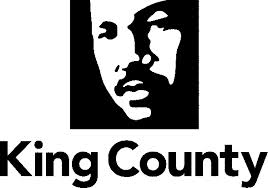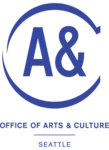
Case Study: Urban Artworks
Case Study: Urban Artworks
Founded: 1995
Headquartered: 815 Seattle Blvd S, Seattle, WA 98134
Program Locations: King County
2016 Operating Expenses: $185k
The SODO (South of Downtown) busway is a two-mile long corridor through an industrial district lined by auto repair shops, warehouses, and workspaces with entrances far from the busway. Like many urban transit thoroughfares, the space accumulated graffiti and litter soon after its opening in the 1980s. In 1994, a local business owner organized a community clean up along the busway to combat the blight with beautification. A group including members of the newly formed SODO Business Association and some at-risk teenagers cleared out trash and removed graffiti from walls and concrete barriers. They knew that keeping it clean, however, would be another challenge, and decided to produce murals to claim the space and deter vandals. It was a transformative project for many of the teens. Working alongside merchants, receiving appreciative kudos from passers-by, and seeing their positive imprint on a neighborhood space, youth who were often regarded as a burden on society felt valuable to the community.
Today, the heart of that first beautification effort is formalized in the core program of Urban ArtWorks. In partnership with the King County Superior Court and King County Education and Employment Resources, about 10 to 12 justice-involved teens receive work training at Urban ArtWorks while they are on probation. For many it is their first job, and Urban ArtWorks is as much an employment training program as it is a public art program. It steps participating youth through a formal interview process, 150 hours of job training, supervision, leadership, and the expectations of maintaining regular work hours, to finally earn that first paycheck. It teaches life skills related to managing budgets, especially for those paying restitution as part of their sentence, communication, and how to negotiate the job market. Youth get an inside look at project management, from what it takes to find and permit a public space for a mural, to arranging labor and materials, to managing a creative process with multiple partners. Today, their art graces not only the busway, but numerous businesses, parks, businesses, construction sites, even signal boxes, lending vibrancy and unique character to these spaces. In fact, Kathleen Warren, Executive Director of Urban ArtWorks, notes they receive more requests for art than they can produce at the current program size.
Social Impact: Creating an offramp from the school-to-prison pipeline
The school-to-prison pipeline starts in a hundred different trivial ways: a bored teenager tags a building, a young girl shoplifts jewelry on a dare, a high schooler gets his wisdom teeth removed and decides to make some quick cash off the leftover painkillers. These minor instances can be life trajectory-setting for individual youth, and combined, our community has a pipeline of juvenile offense filings that are 45% African American, 24% Caucasian, and 19% Hispanic (compared to 8%, 58%, 15% respectively in the general population under 18).
Participation in Urban ArtWorks happens at a crucial fork in the road for justice-involved youth; it is a path that leads to earning money, practicing job skills, meeting friends and adult mentors, and a positive job reference. The other path can become a snowball of fines and fees, repeat offenses, and difficulty obtaining and keeping legitimate employment. Eighty-three percent of Urban ArtWorks youth do not re-offend. Not only are they out of the pipeline, they are in the community giving back. About half of Urban ArtWorks’ teaching artists are former participants, and their alumni include notable local professional artists, such as muralist Angelina Villalobos. The opportunity is not lost on the youth who participate in this program. Warren reflects on some of her favorite parts of her job, “the calls we get to make to accept kids into the program, sometimes it’s like they won the lottery.”
Eighty-three percent of Urban ArtWorks youth do not re-offend. Not only are they out of the pipeline, they are in the community giving back.
Public art makes a given place unlike any other on the planet. It is a permanent visual signal to residents that they are home and to visitors that they are someplace special. There are over 500 Urban ArtWorks murals around town, each a distinctive declaration that the people here care about this place. When youth play a role in installing a mural, no matter how small, they experience the pride of seeing their name on something celebrated rather than condemned – not to mention the occasional expressions of community’s gratitude through free food, impromptu parties, and smiles. Warren notes, “Even if you just helped with a little piece, you can tell [you have made an impact] when [residents] make additional investments to light up an area with a mural or organize clean-ups to keep the mural area clean.”
Some of the region’s major private employers are also in on the action. The Bill & Melinda Gates Foundation commissioned Urban ArtWorks to paint bus stops in front of their buildings, and Facebook commissioned major murals inside their Dexter Avenue offices in line with their long-standing commitment to office environments full of local art. It is not just for fun either. Research shows that people in “enriched” office environments, those with art and plants of their choosing, work about 15% quicker and have fewer health complaints than in those containing only things directly relevant to their work. Urban ArtWorks sends some of their most dedicated youth to contribute to these special commissions, giving them a glimpse into a professional work environment, a chance to imagine a future there, and, as a bonus, earn a private sector rate of pay.
Twenty-four years after that first cleanup, nearly 100,000 riders on buses and the Link Light Rail experience the unique artworks produced by these teams of artists and youth on an average weekday37. Many are daily commuters perhaps taking a break from their smartphones to let their eyes rest on the colorful images scrolling by before heading into a day’s work. Others are entering Seattle as visitors for the first time and descending into the mural-lined passage with the city skyline in view can feel like the Emerald City is rolling out her red carpet. But the luckiest ones are the 2,000 youth who have been through Urban ArtWorks who see them and think, “I helped make that happen.”
Sponsors
Social Impact Study Community Conversations Sponsors
![]()
![]()






